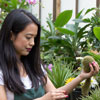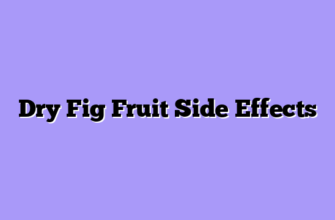When I first encountered the African fig fruit at a specialty produce market years back, I had no idea this peculiar-looking berry would become one of my most rewarding crops here in sunny San Diego. The vendor called it “umKokola,” and when I bit into that first fruit, the sweet-tart explosion of flavor stopped me in my tracks. Right then, I knew I had to grow these remarkable plants on my farm.
Let me take you on a journey through my experience cultivating what’s scientifically known as Carissa macrocarpa (though some botanists still refer to it as Carissa grandiflora). You might know this versatile plant by its more common names: Natal plum, Amatungulu, or simply the large num-num. In its native South Africa, people call it by various names depending on the region—noem-noem in Afrikaans, or amathungulu in Zulu. Whatever you call it, this thornberry bush has earned its place as one of my favorite exotic fruits to cultivate.
Why I Fell in Love with Natal Plums
You know that feeling when you discover something that seems almost too good to be true? That’s exactly how I felt about Carissa. Here’s a plant that laughs at drought, shrugs off salt spray from our coastal breezes, and produces fruit almost year-round in our Mediterranean climate. The glossy, deep green foliage stays attractive even when the plant isn’t fruiting, and those fragrant white flowers? They smell like jasmine on a warm evening.

My first harvest was modest—maybe twenty pounds from three established bushes I’d purchased from a specialty nursery. But I was hooked. I started experimenting with different varieties, propagation methods, and growing techniques. Today, I’ve got over fifty plants scattered across my two-acre property, and they’re producing consistently throughout the growing season.
Cultivating Success: Practical Growing Insights
Getting Started with These Thorny Beauties
Let’s talk real-world cultivation, because that’s where the rubber meets the road. When I started, I made plenty of mistakes—like not respecting those formidable thorns! These aren’t your delicate rose prickles; Carissa macrocarpa sports serious spines that can reach two inches long. I learned quickly to wear thick leather gloves and long sleeves during pruning season.
Site Selection and Soil Requirements:
- Choose locations with excellent drainage—these plants absolutely detest wet feet
- Full sun produces the best fruiting, though they’ll tolerate partial shade
- Soil pH between 5.5 and 7.5 works well (our San Diego soil sits around 6.8, which is perfect)
- Sandy or loamy soils are ideal; heavy clay should be amended generously
The beauty of growing Natal plums in Southern California is that our climate mirrors their native habitat remarkably well. We get those warm, dry summers and mild winters that make these plants thrive. I’ve watched my bushes sail through temperatures down to 25°F without significant damage, though younger plants need protection from hard freezes.
Here’s something I discovered through trial and error: spacing matters more than I initially thought. I planted my first batch too close together—about four feet apart—thinking I’d create a productive hedge. Wrong! Air circulation suffered, and I started seeing fungal issues during our occasional humid spells. Now I space them six to eight feet apart, and the improvement in plant health has been dramatic.
The Growing Season Dance
Managing these plants through the seasons has taught me patience and observation. In San Diego, my Natal plums don’t follow a strict seasonal pattern like deciduous fruits do. Instead, they operate on what I call a “pulse system”—flush of growth, flowering, fruiting, rest, repeat. During our warmest months from May through October, I might see three or four of these cycles.
My Seasonal Management Timeline:
- Late Winter (February-March): Light pruning to shape plants and remove dead wood; apply slow-release organic fertilizer
- Spring (April-May): Primary flowering period begins; maintain consistent irrigation as temperatures rise
- Summer (June-September): Peak fruiting season; harvest every 3-4 days; watch for spider mites in extreme heat
- Fall (October-November): Secondary flowering flush; reduce watering slightly as temperatures moderate
- Winter (December-January): Minimal growth; reduce fertilization; enjoy sporadic ripe fruits from earlier flowers
One thing that surprised me was how much water management affects fruit quality. Too much water during ripening dilutes the flavor significantly. I learned to cut back irrigation by about thirty percent once fruits start showing color. The result? More concentrated sugars and that perfect sweet-tart balance I’m after.
From Harvest to Kitchen: Maximizing Your Bounty
Have you ever wondered what to do with a fruit that most Americans have never heard of? I certainly did! My first abundant harvest left me scrambling for recipes and preservation methods. Let me share what I’ve discovered works beautifully.
The first rule of harvesting Natal plums: they must be fully ripe on the bush. Unlike some fruits that continue ripening after picking, these stop developing sugars the moment they’re removed from the plant. I judge ripeness by color (deep burgundy or purple-black for most varieties) and a slight softness when gently squeezed. Underripe fruits taste astringent and unpleasant—believe me, I’ve learned this lesson the hard way.
| Harvest Stage | Color | Texture | Flavor Profile | Best Use |
|---|---|---|---|---|
| Underripe | Bright red to pink | Very firm | Astringent, tart | Avoid harvesting |
| Semi-ripe | Dark red | Firm with slight give | Tart, somewhat sweet | Cooking, preserves |
| Fully ripe | Deep burgundy/purple-black | Soft but not mushy | Sweet-tart, complex | Fresh eating, all uses |
| Overripe | Very dark, dull skin | Mushy | Overly sweet, fermented notes | Compost |
I’ve experimented with countless recipes over the growing seasons. The fruits make exceptional jam—that natural pectin content means you don’t need much added thickener. I’ve also had success with:
- Natal plum sauce for grilled meats (works like cranberry sauce)
- Smoothies blended with banana to balance the tartness
- Pies and tarts that rival anything made with cultivated plums
- Fermented into a unique fruit wine that’s become popular with my farmers market customers
My bestseller at the local farmers market? A Natal plum chutney with ginger, onions, and warm spices. People who’ve never heard of African fig fruit become instant converts after tasting that sweet-spicy combination.
Challenges and Real-World Problem Solving
Let me be straight with you—no crop is perfect, and Natal plums come with their share of challenges. Those thorns I mentioned earlier aren’t just an inconvenience during harvest; they make these plants difficult to place in high-traffic areas of a farm. I’ve created dedicated harvesting pathways with clear approaches to each plant, which has reduced my collection of thorn-induced scratches considerably.
Pest pressure remains relatively light compared to other fruits I grow, but we’re not entirely problem-free. Scale insects occasionally appear on stems and leaves, particularly during our cooler months when natural predator populations drop. I’ve had good results with horticultural oil sprays applied in early morning before temperatures climb. Spider mites can explode during hot, dry Santa Ana wind conditions, but a strong water spray every few days keeps them manageable without resorting to harsh chemicals.
Common Cultivation Challenges and Solutions:
| Challenge | Symptoms | My Solution | Prevention Strategy |
|---|---|---|---|
| Root rot | Yellowing leaves, wilting despite water | Improve drainage; reduce watering | Plant in raised beds or mounds |
| Scale insects | Brown bumps on stems, sticky honeydew | Horticultural oil spray | Encourage beneficial insects |
| Slow fruit set | Abundant flowers but few fruits | Hand pollination; attract pollinators | Plant flowering herbs nearby |
| Sunscald on fruit | White, bleached patches on berries | Strategic branch positioning | Maintain some canopy cover over fruit |
The pollination question intrigued me initially. While Natal plums are technically self-fertile, I’ve noticed significantly better fruit set when multiple plants grow near each other. The fragrant flowers attract various bee species, small beetles, and even hummingbirds to my farm. I intentionally planted flowering herbs like lavender and salvia between my Carissa bushes, creating a pollinator paradise that benefits all my crops.
The Economics and Market Potential
Here’s where things get interesting from a business perspective. When I introduced Natal plums at my farmers market stand, nobody knew what they were. Zero recognition. But you know what? That’s actually become an advantage. There’s something exciting about introducing people to a genuinely new taste experience.
My pricing strategy evolved through experimentation. Initially, I priced them similarly to conventional plums—around four dollars per pound. They didn’t sell. People weren’t willing to pay that much for something unfamiliar. So I changed tactics: I started offering generous samples and positioned them as a gourmet specialty item at six dollars per pound. Sales tripled. Turns out, people value perceived rarity and the story behind the fruit more than simple commodity pricing.
The value-added products generate even better returns. That chutney I mentioned? I sell eight-ounce jars for ten dollars, and they fly off the shelves. My cost per jar, including fruit, other ingredients, labor, and packaging, runs about three dollars. The profit margin speaks for itself.
Looking Forward: Why You Should Consider Growing These
Would I recommend Natal plums to other farmers in suitable climates? Absolutely—but with realistic expectations. This isn’t a crop that will make you rich overnight, and it requires patient market development. However, if you’re looking for a low-maintenance, drought-tolerant fruit that produces consistently with minimal chemical inputs, Carissa macrocarpa deserves serious consideration.
The plant’s versatility extends beyond just fruit production, too. I’ve successfully marketed rooted cuttings to landscapers who appreciate the ornamental value and defensive qualities—those thorns make an impenetrable security hedge. Some customers specifically seek them for coastal properties where salt tolerance is essential.
What really keeps me excited about these African imports is their resilience in our changing climate. As water becomes increasingly precious here in Southern California, crops that thrive with minimal irrigation become not just preferable, but necessary. My Natal plums receive perhaps half the water of my citrus trees while producing comparable income per square foot.
So whether you call them African fig fruits, Natal plums, amatungulu, or simply by their scientific name Carissa macrocarpa, these remarkable plants have earned their place in my diverse farming operation. They’ve taught me patience, rewarded my experimentation, and connected me with customers hungry for authentic, unusual flavors.
If you’ve got the right climate, some space, and a willingness to educate your market, I’d encourage you to give these thorny treasures a try. Just remember: wear good gloves, pick only fully ripe fruits, and never underestimate the power of a free sample to win converts. That’s the wisdom I’ve gathered from growing these fascinating plants, and I’m still learning something new with each harvest.








